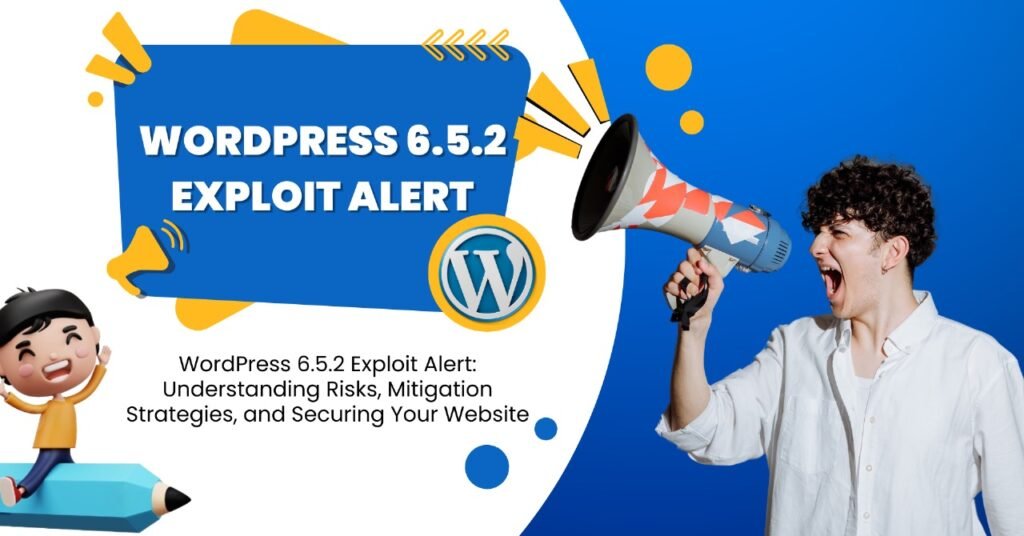
In recent times, WordPress has issued an exploit alert regarding version 6.5.2, highlighting potential risks that website owners need to be aware of. In this blog post, we’ll delve into the WordPress 6.5.2 exploit alert, discussing the risks involved, strategies to mitigate these risks, and steps to secure your website effectively.
Understanding the Risks:
The WordPress 6.5.2 exploit alert signifies that there are vulnerabilities in this particular version of WordPress that malicious actors can exploit. These vulnerabilities can range from issues with plugin or theme compatibility to more critical security flaws that could lead to unauthorized access, data breaches, or even website defacement.
- Cross-Site Scripting (XSS): Where attackers can insert harmful scripts into pages seen by others.
- SQL Injection: Hackers could run harmful SQL queries to access or alter your database.
- Authentication Bypass: Issues that permit unauthorized entry to admin sections or critical features.
- File Upload Vulnerabilities: Exploits that enable attackers to upload and run harmful files on your server.
Mitigation Strategies:
To mitigate the risks associated with the WordPress 6.5.2 exploit alert, consider the following strategies:
Update to the Latest Version: Start by updating your WordPress to the newest version. Developers regularly release updates to fix vulnerabilities, making it crucial to stay current.
Audit Plugins and Themes: Check all installed plugins and themes for compatibility with the latest WordPress version. Remove any old or unused ones and replace them with secure options from trusted sources.
Use Security Plugins: Enhance your website’s security with plugins like Wordfence, Sucuri, or iThemes Security. These tools can identify and block malicious activities, monitor file changes, and bolster login security.
Enable Two-Factor Authentication (2FA): Add an extra layer of security by requiring users to verify their identity with a second factor, like a one-time code sent to their phone, along with their password.
Regular Backups: Keep regular backups of your website to quickly restore it in case of a security breach or data loss. Use reliable backup plugins or services that offer automated backups and secure storage.
Securing Your Website:
Apart from the strategies mentioned earlier to address specific issues, here are some general tips to boost the security of your WordPress website:
Encourage Strong Passwords: Advise users to create strong, unique passwords. Consider enforcing password policies that require a mix of letters, numbers, and special characters to enhance security.
Limit Login Attempts: Employ plugins or server settings to restrict the number of login tries allowed within a specific timeframe. This helps deter brute-force attacks aimed at guessing passwords.
Regular Security Audits: Perform routine security checks on your website. Scan for malware, review file permissions to ensure only authorized access, and inspect server logs for any suspicious activities that might indicate a security breach.
Choose Secure Hosting: Opt for a reliable hosting provider that offers secure hosting environments. Look for SSL/TLS certificates to encrypt data in transit and inquire about proactive security measures like firewalls and intrusion detection systems.
By following these tips alongside the specific mitigation strategies mentioned earlier, you can significantly enhance the overall security of your WordPress website.
The alert regarding the WordPress 6.5.2 exploit underscores the critical need for website owners to take proactive steps in securing their sites. By grasping the potential risks associated with such exploits, adopting effective mitigation strategies, and adhering to established best practices for website security, you can greatly diminish the chances of being targeted by malicious attacks. This not only protects your online presence but also contributes to a safer environment for your business or personal brand on the internet.
